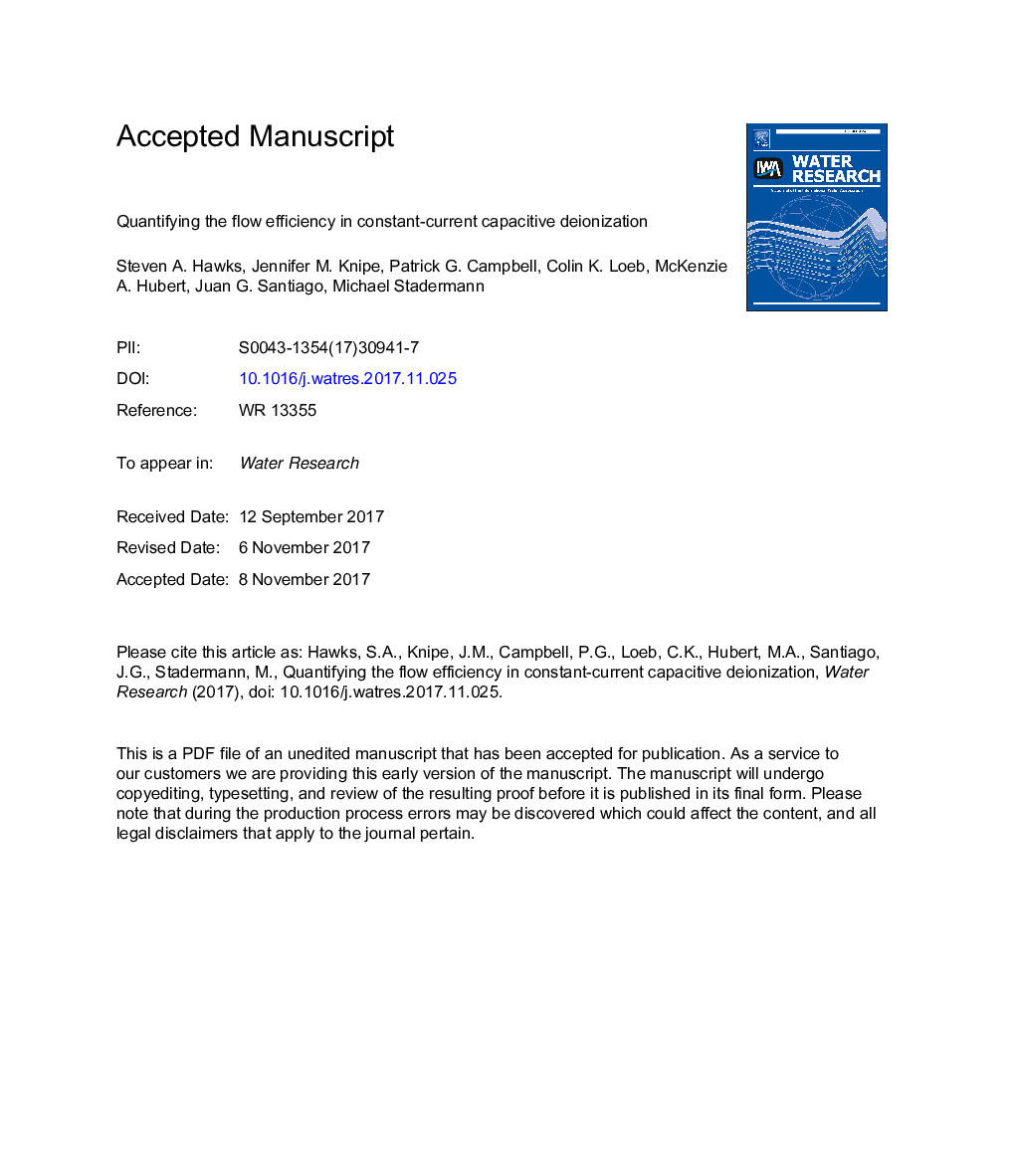| Article ID | Journal | Published Year | Pages | File Type |
|---|---|---|---|---|
| 8874671 | Water Research | 2018 | 26 Pages |
Abstract
Here we detail a previously unappreciated loss mechanism inherent to capacitive deionization (CDI) cycling operation that has a substantial role determining performance. This mechanism reflects the fact that desalinated water inside a cell is partially lost to re-salination if desorption is carried out immediately after adsorption. We describe such effects by a parameter called the flow efficiency, and show that this efficiency is distinct from and yet multiplicative with other highly-studied adsorption efficiencies. Flow losses can be minimized by flowing more feed solution through the cell during desalination; however, this also results in less effluent concentration reduction. While the rationale outlined here is applicable to all CDI cell architectures that rely on cycling, we validate our model with a flow-through electrode CDI device operated in constant-current mode. We find excellent agreement between flow efficiency model predictions and experimental results, thus giving researchers simple equations by which they can estimate this distinct loss process for their operation.
Related Topics
Physical Sciences and Engineering
Earth and Planetary Sciences
Earth-Surface Processes
Authors
Steven A. Hawks, Jennifer M. Knipe, Patrick G. Campbell, Colin K. Loeb, McKenzie A. Hubert, Juan G. Santiago, Michael Stadermann,
